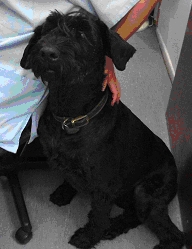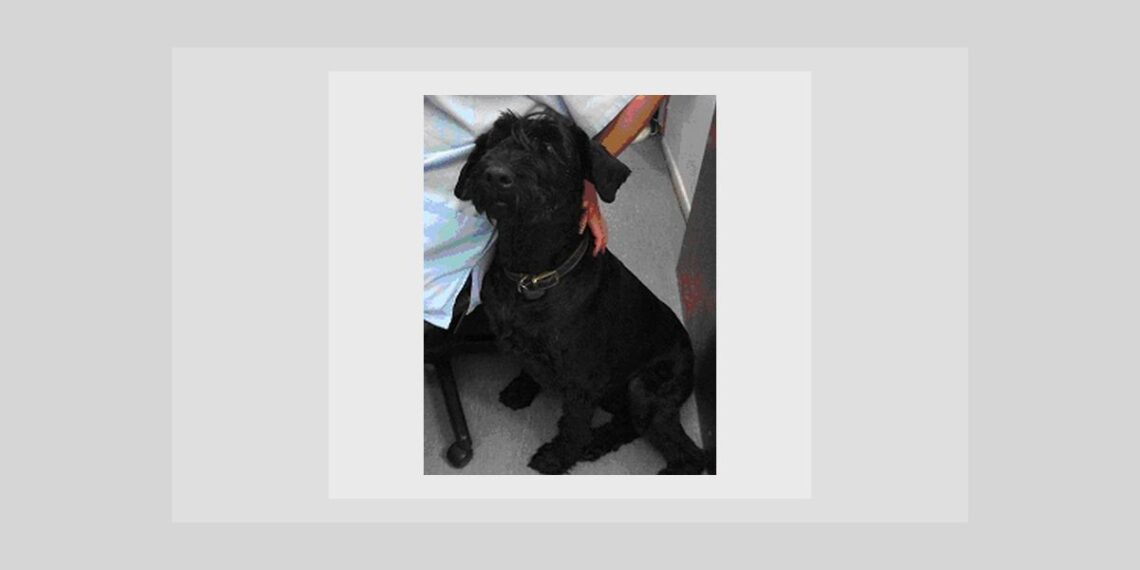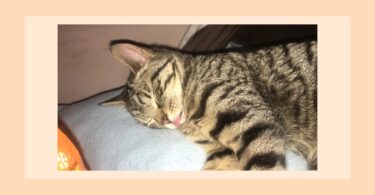In November 2012 we had occasion at NWCH to witness the diagnostic skills of Geoff Johnson, a homoeopathic vet from the SouthWest of England who treats both animals and humans in his practice. The case reported was a live animal case presented as a teaching exercise to the third and fourth year students at NWCH.
The patient

Hermione
Hermione was an 11 year old Giant Schnauzer dog who belonged to one of the students associated with the college. She had been ill for approximately 8 months prior to presentation. Allopathically she appeared to have two conditions concurrently. She was displaying symptoms of CDRM – a chronic degenerative condition affecting the sensory pathways of the hind limbs, more specifically those relating to proprioception (the body’s ability to sense movement within joints and joint position). This results in dragging hind limbs and muscle wastage and a progressive weakening of the legs. Additionally, she had an issue with eating; shortly after eating she was compelled to vomit the contents of her stomach. Once this had happened she then seemed able to eat. Both conditions had manifested at the same time. X-rays and blood tests taken at the time of first onset had been inconclusive. As she had seemed so bright in every other respect and as initial allopathic treatment had made very little difference the decision had been made to consider homoeopathic alternatives.
At the time of presentation she had very little power in her hind limbs and was very thin. She found it very difficult to stand for any length of time; as she stood her hind-quarters would gradually sink lower and lower. On occasion she fell over, particularly when knocked by her boisterous canine companions. It should be noted that the usual life-expectancy for a Giant Schnauzer is around 10 years.
The case taking
Why are you here?
My dog has hip problems, I believe she is in the last stages since her back legs are so weak now. Additionally she has this very odd condition. She eats very fast, she is like a gannet. Then shortly after eating she will need to go outside or as close to outside as possible, she will walk around in circles and vomit. She retches with her head down, she seems in discomfort. Once she has vomited this will pass off very quickly. She seems to prefer to be in the fresh air to do this, if she can’t get outside she will need to be by the back door where she can see outside. It isn’t because she is worried about messing in the house as she has never been that clean. As a puppy it took a long time for her to be reliably house-trained – she was at least 18 months old. She would even foul in her puppy crate. Even now if she gets caught short she will urinate or defaecate in the house, unlike our last dog who would only mess indoors in extreme circumstances.
How old was she when you got her?
She was 5 months old. Normally you would get a puppy at around 6 weeks old, we were looking for a replacement for our previous dog and Hermione was available.
What sort of conditions was she kept in before you got her?
The dogs were all kept outdoors in loose-boxes, they weren’t kept inside in the house. The conditions were shambolic but the dogs appeared clean and well-cared for. I subsequently discovered that the breeder had enlisted the help of a couple of men to look after the animals, one of whom most likely had an alcohol problem, and that they were probably a bit rough with the dogs. I am not sure the puppies got much individual care and attention.
What was she like when you first got her?
She was very sweet, very puppy like, but very stubborn. She knew what she wanted and she made sure she got it. For example we had intended that she be confined to the ground floor and had put a trellis across the stairs. Within minutes of arriving in the house she had pulled it down and gone upstairs. We fixed up a stair gate but she just jumped over it. We never succeeded in stopping her roaming the house. She would go upstairs and raid visitor’s bags and eat chocolate or whatever she found in there. She was like a Tonka toy ( a very robust children’s toy – a truck or similar), a tank! We moved recently into a town from the country and she has found a way of opening two door knobs and getting out into the front of the house. She stands in the middle of the road. She has wandered off a few times and been found by strangers.
What sort of energy does she have when she’s in the house?
She is very unsettled. She will pace and pant. She will go from person to person and seem unsettled. It’s almost as though she is looking for something. When we are relaxing in the evenings we usually now put her in her bed as she is disruptive.
Is she a defiant dog?
If she is caught in the act of stealing food or doing something else unacceptable she will look guilty. She is a terrible food thief so most of her indiscretions are food related. She is not aggressive or overtly defiant. I would say she is more stubborn.
What is she like with other dogs?
She is not bothered. She generally ignores them. She is not particularly sociable. She really likes people, she leans on them and invites them to stroke her. She doesn’t seem to particularly like the two other dogs we own.
Does she go for other dogs?
If they come right into her space she might snap at them to go away. It’s more about ‘go away, leave me alone’ than picking a fight. If they were to snap at her she would probably snap back but then walk away. As a puppy she would always have to have something in her mouth. She chewed and destroyed many things within the house but even if she were out for a walk she would want to be carrying a stick constantly. In the house she was very destructive for the first couple of years.
Has she had other health problems in the past?
She has generally been very healthy other than an infected toe which she licked and licked and eventually needed to have amputated as she got an infection that couldn’t be cleared up. It got into the bone. She was a nightmare after this operation as she wouldn’t keep any bandages on and persisted in licking and licking. Eventually it healed up. She has numerous benign fatty lumps and cysts. She was spayed at 6 months old before she had any season. She had x-rays and a barium swallow recently when the vomiting problem first started. She has not had x-rays recently for her hind-limb weakness. She has been on metacam (a non-steroidal anti-inflammatory drug) and a commercial diet enhanced with fish-oils. The diet seems to help more than the drugs so she’s just been on that recently. In the last 2-3 weeks her hind-limb problem has seemed to become more neurological in nature. She is tending to fall over if she turns too quickly to one side, this is not characteristic of arthritis.
Do you think she is in pain with this leg problem?
She doesn’t appear to be. She doesn’t limp.
Tell me about the onset of the neurological condition?
She started vomiting in the summer I think (it is now November). Before then she was a big solid dog, and had had occasions when she got quite fat. Then she lost a lot of weight, as well as much of the muscle from her back end. Now I can’t seem to get any weight on her although she hasn’t lost her appetite. Even after she has vomited she will be happy to eat straight after. Her coat has become really greasy and scurfy too. It feels poor. She hasn’t lost her appetite though. She has always been a really greedy dog and a terrible food thief. She will steal food from people’s bags given the opportunity. She has stolen food on countless occasions. We have had to put child locks on our cupboards. She will steal bizarre things like peanut butter, cooking oil, nutella, she even stole and ate a bag of bread flour recently. She will eat raw food whilst it is defrosting. She doesn’t seem to discriminate.
Does she have any fears?
She really doesn’t like thunderstorms. She paces and pants and comes to find us. We can’t seem to console her. She will pant and be restless until it has passed.
What makes her excited?
She loves going out for walks. She seems to get a lot of pleasure from being outdoors.
Observations
Whilst her owner was relaying information, Hermione was let loose and allowed to roam around the room at will. It was noted that she paced almost constantly and walked from person to person. She would lean on the person and allow herself to be stroked, indeed if she was ignored she would nudge the student’s hand until they were compelled to stroke her. However she would not make eye-contact or really seem to connect with the individual making a fuss of her. She would not settle long with that individual before wandering off and finding another student to stroke her. Throughout the forty minutes of the session she did not appear to settle at all. It was noted that she appeared detached from her owner. Her owner was asked whether this type of behaviour was representative, and she confirmed that this was indeed the case when visitors came to the house. To the point where she would make a real nuisance of herself and need to be shut away. Her owner admitted that she had been a difficult dog to own and love and that there was an air of detachment about her which was reciprocated by the owner.
Analysis
The following salient points were considered to be the most outstanding features of Hermione’s personality and current condition:
1) Her extreme greed/bulimia
2) Her vomiting shortly after eating, but then being ameliorated once having vomited. The restlessness/pain whilst vomiting
3) Her need to be stroked. Desire for sympathy. Desire to lean against people.
4) The detachment both in her, and in her owner towards her, and towards the other dogs in her ‘pack’. Her apparent sadness
5) Her desire for fresh air. The fact that apparently she sought fresh air when vomiting and that it appeared to make her feel better. The desire to escape from the house and run away.
6) Her lower limb paralysis, the dragging of her lower limbs.
A computer repertorisation was undertaken within the class (many of the rubrics were merged):
1 Mind, Greed
2 Mind, Bulimia
3 Mind, Restlessness
4 Mind, Company, desire for
5 Mind, Morose
6 Generals, Walking,-air; in open .ameliorates
7 Generals, Emaciation, appetite with emaciation, ravenous
8 Stomach, Eating,-after .agg
9 Stomach, Vomiting, eating after, agg
10 Extremities, Weakness-Lower limbs.
The following remedies were then considered for differentiation:
Arsenicum, Antimonium Crudum, Calcarea Carbonica, Iodum or an Iodatum, Magnesia Carbonica, Natrum Muriaticum, Saccharum Officinale and Sepia
Following analysis of the suggested remedies Magnesia Carbonica was felt to be the similimum for this case. The prescription was Magnesia Carbonica 200c as a wet dose (2 pillules dissolved in 500ml water) to be administered twice a day having been succussed before each subsequent dose. This was to be given until any changes were noted and then was to be stopped.
It was observed within the class that Mag carb was a particularly interesting remedy for this dog given its moniker of ‘the orphan’s remedy.’ It was noted that this dog had had a fairly unconventional and potentially loveless puppy-hood for the first few months of life, when most puppies at that stage would be integrating into their new families.
Follow up
There was marked improvement within a couple of weeks of giving the remedy. Notably within two days she was able to jump up into boot of the car, (up until this point she had needed lifting in). Her coat appeared more shiny and less scurfy and she gained some much needed weight. It was also felt that she just seemed generally happier and far more playful with the other dogs in the household. She stopped vomiting after feeding and seemed generally less unsettled when she ate. At this point, as instructed, the remedy was stopped. It was started again a couple of weeks later since the hind-limb weakness was deteriorating once more.
Outcome
Hermione was euthanised in late January because her condition had progressed to the point where she was continually falling over. Since she had received the first dose of her homoeopathic remedy she had seemed to transform into a really happy dog. However gradually her hind-limb function reached a point where it was starting to impact on the quality of her life. It was felt that the remedy had extended her life by six weeks, and furthermore that she had died a really happy dog, whereas prior to her remedy she had been really depressed.
Discussion
I felt it was important to look at this case for two reasons. Firstly, there are far fewer animal cases written up in the literature. I feel this case illustrates very clearly how it is possible to take a clear and descriptive history, and make very valid observations about the character and behaviour of the patient in front of us, even though they cannot verbalise their symptoms.
Secondly to acknowledge that, although Hermione did not live for long after her remedy, it is important that we see the facts for what they are and not dismiss the treatment as a failure of homoeopathy to act. Homoeopathy cannot perform miracles, what it does do is stimulate the vital force to energetically alleviate those symptoms it is physically possible so to do. By the time of consultation Hermione’s muscles were so wasted she was barely able to support her body weight. It was asking too much of her vital force to rebuild her hind limbs to the point where she was going to make a full recovery. What her vital force was able to achieve was to give her that sense of well-being with which we homoeopathic practitioners are so well-acquainted. Not only was her life extended by six weeks, but she had really good quality time and was happy and playful up until she died.






Dear Authors!
It is a very nice case. I am vet and human homeopath too. I work with Sankaran method of sensation.
I take case by dogs on similar way, as you. I agree with you, that the opservation of animals is the key of case taking. The animals can a lot of things show us, during her behaviour.
I agree with your conclusions too, what you had been written in discussion.
Have a nice day!
DVM Szecsődi Ferenc
21220 Becej
Serbia